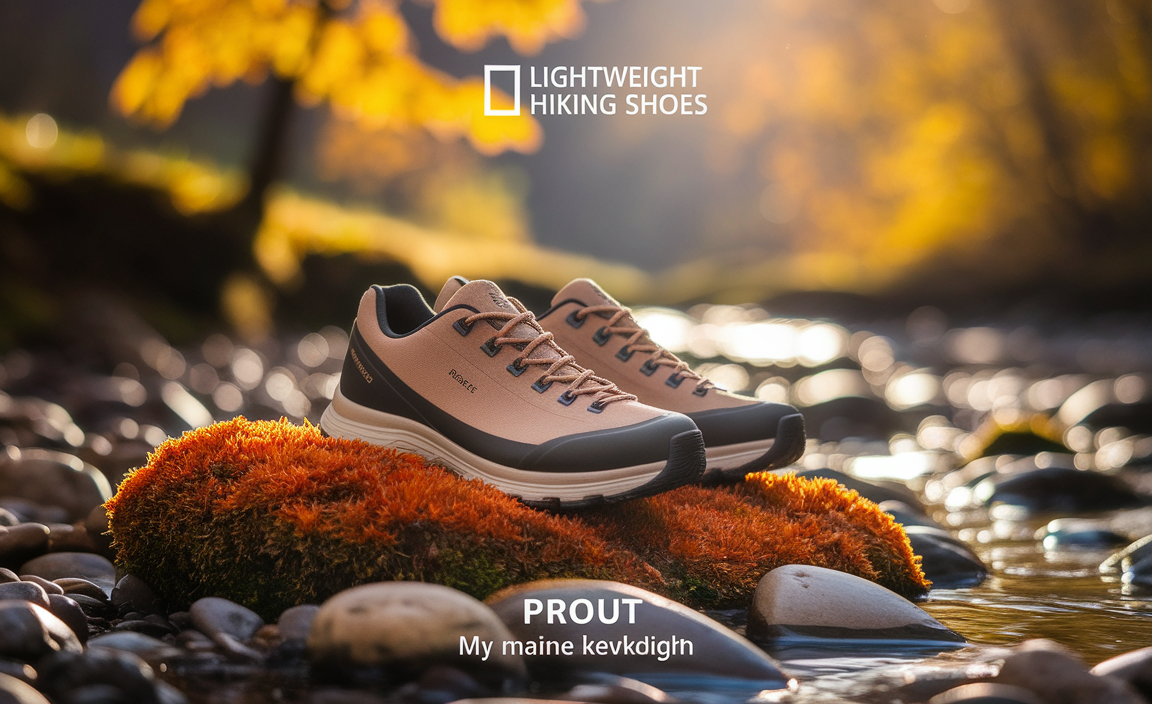Australia Sunrise & Sunset Photo Spots: Proven Essentials
Australia offers breathtaking sunrise and sunset photo opportunities. Discover top spots across the country, from iconic landmarks to hidden gems. This guide provides essential tips and locations to capture stunning golden hour shots with ease, making your photography dreams a reality.
Australia is a photographer’s paradise, especially when the sun dips below or rises above the horizon. Capturing that perfect sunrise or sunset shot can feel like a magical experience. But with so many beautiful places, where do you even begin? Don’t worry! Whether you’re a seasoned photographer or just starting with your phone, finding the best spots in Australia for sunrise and sunset photos is easier than you think.
We’ll guide you through some of the most iconic and accessible locations, giving you the confidence and knowledge to create your own unforgettable images. Get ready to chase those golden hours – your next amazing photograph awaits!
Why Chase the Sun in Australia?
The Land Down Under is blessed with diverse landscapes, from vast deserts and rugged coastlines to lush forests and vibrant cities. This variety means that almost every corner of Australia offers a unique backdrop for the sky’s daily masterpiece. The quality of light here is often spectacular, painting the clouds and land in hues of orange, pink, red, and gold. It’s a natural phenomenon that provides endless creative opportunities for photographers of all levels. Beyond the sheer beauty, capturing sunrises and sunsets can be a peaceful and reflective part of your travel experience, offering a moment of quiet connection with nature before the world wakes up, or as it winds down.
Essential Gear for Golden Hour Photography
You don’t need a professional setup to capture stunning sunrise and sunset photos in Australia. However, a few key pieces of gear can make a significant difference. Thinking about your comfort and preparedness is always a priority for me at Journey Essentials. Just like having the right travel diaper for peace of mind on a long journey, having the right camera gear ensures you don’t miss a shot due to technical hiccups. Here’s what can help:
Camera
Your Smartphone: Modern smartphone cameras are incredibly capable! They are lightweight, easy to use, and perfect for casual photographers. Many have excellent low-light performance and manual controls that can be accessed through apps.
DSLR or Mirrorless Camera: If you have one, these offer more control over settings like aperture, shutter speed, and ISO, allowing for more creative flexibility and higher image quality, especially in challenging light.
Lenses (If Applicable)
Wide-Angle Lens: Great for capturing expansive landscapes and including plenty of the sky in your shot. Think of capturing the grandeur of Uluru at sunrise.
Telephoto Lens: Useful for compressing the scene or focusing on details like the sun itself as it sets over the ocean.
Tripod
This is crucial for stability, especially in low light conditions when you’ll likely be using slower shutter speeds. A tripod prevents blurry photos and allows for sharper images. Look for a lightweight, portable one for easy transport. A sturdy tripod is as essential to a clear photo as reliable adult diapers are to a stress-free flight – it provides the support you need.
Filters (Optional but Recommended)
Graduated Neutral Density (GND) Filter: This filter is darker on top and clear on the bottom. It helps balance the exposure between a bright sky and a darker foreground, preventing the sky from being blown out. This is a game-changer for sunrise and sunset photography.
Circular Polarizer (CPL) Filter: Can enhance colours and reduce glare, making skies appear deeper blue and clouds more defined.
Extra Batteries and Memory Cards
Sunrise and sunset are fleeting moments. You don’t want to run out of power or space. Always pack spares!
Remote Shutter Release or Intervalometer
This helps avoid camera shake when pressing the shutter button, ensuring sharper images. An intervalometer is useful for creating time-lapses.
Comfortable Clothing and Footwear
You might be waiting in the dark or in cooler temperatures. Layers are key. Comfortable shoes are essential for walking to and from your chosen spot.
Planning Your Photo Adventures
Successful sunrise and sunset photography isn’t just about showing up; it involves a bit of planning. Here’s how to increase your chances of getting those postcard-worthy shots.
1. Check the Weather
A completely clear sky can sometimes be less dramatic than one with interesting cloud formations. Clouds catch and reflect light, creating vibrant colours. Look for forecasts that predict a mix of clouds.
2. Know the Sun Times
Use apps or websites like Time and Date to find the exact times for sunrise and sunset in your location. Plan to arrive at your spot at least 30-45 minutes before sunrise or sunset. This gives you time to set up and capture the beautiful “blue hour” just before sunrise or after sunset, as well as the main event.
3. Scout Your Location
If possible, visit your chosen spot during daylight. This helps you assess potential compositions, identify any obstacles, and find the best vantage points. You want to know where you’re going before it’s dark!
4. Understand the Light
The “golden hour” is the period shortly after sunrise and before sunset. The light is soft, warm, and diffused, creating beautiful, flattering tones. The “blue hour” is the period before sunrise and after sunset when the sky takes on a deep blue hue. Both are magical in their own way.
5. Compose Your Shot
Think about foreground interest. A strong foreground can anchor your image and add depth. This could be rocks, foliage, a building, or even the silhouette of a person. Consider the rule of thirds – placing your subject off-center can create a more dynamic image.
Proven Australia Sunrise & Sunset Photo Spots
Australia is vast, offering incredible opportunities across its diverse states and territories. Here are some of the most beloved and proven locations to capture the magic of sunrise and sunset. We’ve tried to include a mix to suit different travel styles.
Uluru-Kata Tjuta National Park, Northern Territory
Sunrise: Witnessing the first rays of sun hit the immense monolith of Uluru is an unforgettable experience. The colours on the rock change dramatically as the light intensifies. The Kata Tjuta (The Olgas) also offer stunning pre-dawn and sunrise views.
Sunset: As the sun sets, Uluru casts long shadows, and the rock glows with warm, earthy tones. The colours can be absolutely breathtaking, making it a quintessential Australian sunrise and sunset experience.
Essentials: Arrive early at designated viewing areas. Dress in layers as desert temperatures can drop quickly after dark. Be respectful of the Anangu culture; photography guidelines and sacred sites must be observed.
Bondi Beach, Sydney, New South Wales
Sunrise: For a classic city meets coast vibe, Bondi Beach is a winner. The sun rises over the Pacific Ocean, casting a golden glow on the water and the iconic white sands. Photographers often capture the surfers catching early waves or the silhouette of the lifeguard tower against the colourful sky.
Sunset: While Sydney faces east, sunset can still be beautiful looking west across the city skyline from parts of the coast, or even capturing moonrises which can have a similar aesthetic. However, for true sunset colours, you might want to head to a west-facing viewpoint within Sydney itself.
Essentials: The Bondi to Coogee coastal walk offers various elevated vantage points. Be mindful of early morning joggers and swimmers. Parking can be challenging.
The Twelve Apostles, Great Ocean Road, Victoria
Sunrise: The rugged sea stacks bathed in the soft morning light is a dramatic sight. The colours of the ocean, sky, and limestone formations blend to create hauntingly beautiful images. Early morning mist can add an ethereal quality.
Sunset: Sunset here is equally, if not more, spectacular. The changing light illuminates the weathered stone pillars and the churning sea below. The intensity of colour as the sun descends is unparalleled.
Essentials: Designated viewing platforms offer safe and excellent perspectives. The weather here can be wild and unpredictable, so sturdy clothing and a good jacket are a must. Roads can be winding; drive carefully.
Cairns Esplanade, Queensland
Sunrise: Facing east towards the Coral Sea, Cairns Esplanade provides lovely sunrise views over the water. The calm waters of the Trinity Inlet can reflect the sky’s colours beautifully, often with the silhouettes of boats or the distant mountains of the Atherton Tablelands.
Sunset: For sunset, head to the western side of Cairns, perhaps the Cairns Botanic Gardens or a higher vantage point overlooking the city and hinterland. The sky can put on a spectacular show behind the lush greenery.
Essentials: The Esplanade boardwalk is easily accessible. Enjoy the local atmosphere and the tropical warmth. Be prepared for humidity.
Kings Park, Perth, Western Australia
Sunrise: Kings Park offers panoramic views of the Perth city skyline, Swan River, and the Darling Range. Capturing the sunrise behind the city skyline as the modern architecture is bathed in warm light is a fantastic urban photography opportunity.
Sunset: Sunset is arguably even more dramatic from Kings Park. Finding a spot on the western side of the park, perhaps near Fraser Avenue, offers an unobstructed view of the sun setting over the Indian Ocean, painting the sky in fiery colours with the city as a silhouette.
Essentials: The park is easily accessible and offers abundant viewpoints. It’s a popular spot for locals and visitors, so expect company. The vastness of the park means you can often find a quieter spot if you explore a little.
Bay of Fires, Tasmania
Sunrise: The Bay of Fires is famed for its pristine white beaches, turquoise waters, and striking orange lichen-covered granite boulders. Sunrise here illuminates the coastline with a serene, soft light, highlighting the unique landscape.
Sunset: While sunrise is beautiful, sunset colours can be incredibly vibrant reflecting off the water and striking boulders. The sky can turn into a canvas of oranges and purples, creating a magical atmosphere.
Essentials: Access is via unsealed roads in some areas. Be prepared for rugged coastal conditions; wind and cooler temperatures are common, even in summer. Protect your gear from sand and salt spray.
Langham Place Hong Kong – Australia Viewing Platform (Virtual Tour for Research)
While not a physical location in Australia, this is a unique mention for educational purposes and understanding perspective. For many travellers, the “best view” can sometimes be an aspirational one. Understanding how iconic cityscapes are captured can inform how you photograph your own surroundings. Dedicated research into hotel and building viewing platforms, often showcased in virtual tours, can reveal unique city angles for sunrise and sunset photography. For instance, observing how a high-rise hotel like Langham Place in Hong Kong captures its cityscape at dawn highlights principles applicable to photographing Australian city skylines from elevated points. This approach encourages looking at urban environments with a photographer’s eye, even if the specific example is overseas, by focusing on the interplay of light, architecture, and elevation. Explore virtual tours of high-rise viewing platforms can offer insights into composition and light management applicable to Australian urban landscapes.
Table of Selected Australian Sunrise and Sunset Spots
| Location | State/Territory | Best For (Sunrise/Sunset) | Key Features | Accessibility |
|---|---|---|---|---|
| Uluru-Kata Tjuta National Park | Northern Territory | Both | Iconic monolith, desert landscapes, cultural significance | Designated viewing areas, requires park entry |
| Bondi Beach | New South Wales | Sunrise | Famous beach, ocean views, city skyline backdrop | Easy public access, parking challenges |
| The Twelve Apostles | Victoria | Both | Sea stacks, dramatic coastline, Great Ocean Road | Designated viewing platforms, accessible by car |
| Cairns Esplanade | Queensland | Sunrise | Tropical coast, calm waters, marina views | Easy public access, boardwalk |
| Kings Park | Western Australia | Both | City skyline, Swan River, Indian Ocean views | Easy public access, elevated terrain |
| Bay of Fires | Tasmania | Both | White beaches, orange lichen rocks, clear waters | Unsealed roads in parts, coastal trails |
Australia Sunrise & Sunset Photography Tips for Beginners
The magic of sunrise and sunset is often in the fleeting light. Here are some practical tips to ensure you capture the best of it:
1. Get There Early and Stay Late
The show isn’t just during the few minutes the sun crests the horizon. The light changes dramatically in the “blue hour” before sunrise and after sunset, offering stunning colours that are often missed. Give yourself plenty of time to set up and soak in the atmosphere. It’s about the entire experience, much like ensuring you have everything you need for a day out with children, including essential child diapers, to avoid interruptions.
2. Use Your Tripod Correctly
When using a tripod, engage your camera’s self-timer or a remote shutter release. Even gently pressing the shutter button can cause tiny vibrations that lead to blurry images in low light. A stable base






